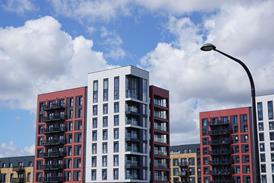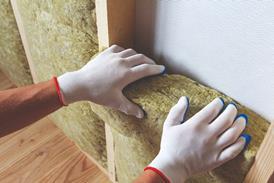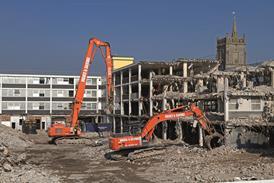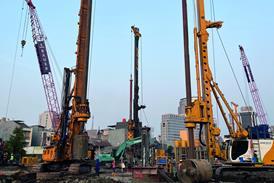Building services technology is vital for providing a comfortable, manageable and energy efficient building. However, PROBE surveys reveal that good building operation is also strongly linked to the design and construction process, and heavily dependent on the quality of facilities management.
Hence PROBE 3 is moving forward into a key phase: implementation. Alongside the usual programme of building revisits, the PROBE Team will be going into the industry to apply the lessons learned from earlier work. These so-called intervention studies will attempt to demonstrate how PROBE findings can be applied.
However, can PROBE feedback be used to improve the design of buildings? Also, will the wider use of energy targeting tools and occupancy surveys improve facilities management? There are also the vexed issues of comfort and productivity to consider – so important to occupiers, but not always understood by clients.
We know that energy efficiency and occupancy satisfaction are mutually dependent. However is occupant satisfaction a true barometer of business productivity? We aim to find out.
Standard PROBE studies
It is now five years since PROBE studies began, and the oldest building on the PROBE database is nine years old. To keep the database up to date, and measure the effectiveness of recent design developments, Building Services Journal will be carrying out four new post-occupancy surveys on buildings notable for their advanced design.
The surveys will be much the same as previously. The four buildings selected for analysis will have been occupied for at least two years. This is to ensure that early teething problems have been given a good chance of being ironed out, and that at least 12 months of representative energy data is available.
The reports will contain design analysis, measurements of energy consumption and occupancy satisfaction. We will also attempt to zoom in on specific issues, such as transport emissions, maintenance costs, the value of a BREEAM certificate, and the worth of energy design tools such as dynamic computer modelling.
With airtightness lurking on the legislative agenda, the BRE and BSRIA will be carrying out pressure tests to chart the growing problem of uncontrolled infiltration. The results will be measured against plant performance.
Intervention studies
For the intervention studies, the PROBE Team will enter into advisory relationships with clients and designers in order to influence four key stages in the life of a building: briefing, design, initial start-up and long-term operation.
The research team will sit alongside clients and design professionals, identify where PROBE methods and findings can be applied, suggest appropriate action, and chart the success of those actions. We hope to benchmark the results by using energy targeting methods, design critiques and occupant surveys, both before and after the studies.
The results will be reported in Building Services Journal and on associated web sites (see factfile "PROBE in cyberspace") to demonstrate the benefits of such exercises.
Briefing
It is clear from previous PROBE investigations that the briefing stage is crucial to a building's final performance. The level of understanding between client and design team, and the clarity with which both parties communicate their needs and intentions, is key to a successful project.
The PROBE team will work closely with a major client to inject PROBE findings into the brief. This advice will be designed to maximise energy efficiency and building usability while protecting the client's business objectives.
Building Services Journal will report on the success of this process, although the full results may take a couple of years to feed through.
Design critique
Even if a client has a clear idea of what it wants from a building, the design team may not be able to make full use of experience from post-occupancy feedback. Many of the PROBE research results are not in a usable form, and even the PROBE methods of analysis are still embryonic as general building design tools.
The PROBE Team will advise a services design team on ways to import PROBE research findings into a project-specific strategy. The Team will also help the designers to apply the methods of assessment in order to refine design priorities.
We anticipate being involved at key stages in the design steeplechase, helping to keep the project objectives on track and aiding the process of integrated design, including benchmarking. For the latter, the energy benchmarks of Econ Guide 19 will be used, while pre-design occupant surveys will identify the characteristics of existing premises which the client may wish to emulate – or avoid.
Building start-up
Results from PROBE studies show that the long-term performance of buildings and user perceptions are often set in the first few months after handover. This applies particularly to building energy management systems and controls of various kinds. This is also a critical period in relationships between the client, the design and construction team, and the eventual building occupiers.
The PROBE Team will identify the barriers to a successful handover and determine the reasons why clients and occupiers have trouble understanding their building. The research team will help a building owner through the difficult months of initial occupation, and assist with energy targeting, monitoring and reporting procedures. The successes and failures of this strategy will then be reported so others can benefit.
Improving building operation
Previous PROBE building investigations have uncovered serious shortcomings in facilities management, or at least mismatches between a building's management needs and the ability of the occupier to provide the right level of management.
In PROBE 3, the investigators will revisit an office building to find out how the occupier fared after the first PROBE visit, and help them achieve demonstrable improvements to the building's energy efficiency and occupant satisfaction.
The intervention process will involve developing an action plan with the occupier, help with implementing PROBE lessons, and analysis of any subsequent improvements to building operation.
The PROBE Team believes that such intervention studies could be the first step in the development of an accredited method of total building evaluation. There could be a PROBE toolkit developed for designers and client to use in evaluating a building's design and operation.
An obvious gap in the programme is the construction process. However, the PROBE Team considers that the effects of different forms of contract and construction management are being covered elsewhere in the current Best Practice Programme. Effort will be made to co-ordinate the findings from both programmes.
PROBE articles will be published regularly in Building Services Journal, with reports on the individual intervention studies appearing over a number of issues. The first PROBE building study will be published in the March 2000 issue.
Your chance to get involved
The PROBE Team is keen to hear from designers, clients and building owners who would like to take part in an intervention study. The investigation team is particularly seeking clients who would like to use PROBE methods and research findings, either for a new project or for one which is close to handover.
Design teams that are considering importing PROBE findings into a scheme design should also get in touch. For further details contact PROBE investigator Robert Cohen at Energy for Sustainable Development on tel: 01225 816819.
PROBE in cyberspace
The PROBE research project has been launched on the worldwide web, enabling all industry professionals to gain access to both generic and project-specific lessons. The site, accessible via www.building-focus.co.uk, will have extensive coverage of the 16 buildings already studied by the PROBE Team, plus rolling updates on new material as it emerges. You will be able to download some of the more recent articles in Acrobat pdf format, and get references to the earlier ones. You will also have access to the extensive range of spinoff articles and features. To get the best out of the site we advise that you have Acrobat Reader version 4.0 on your hard disk, although version 3.0 will suffice. It is available free from the Adobe web site.PROBE Q&A
What does the PROBE acronym mean? Post-occupancy Review Of Buildings and their Engineering. Who pays for the work? The costs of the £263 850 research project will be shared by Building Services Journal and the Department of the Environment, Transport and the Regions (DETR), which provides a 50% cash contribution under its Partners In Innovation research programme. Who does the research? The PROBE research project is coordinated by Roderic Bunn, editor of Building Services Journal. The research team is led by Paul Ruyssevelt of Energy for Sustainable Development (ESD), with fellow ESD energy specialists Mark Standeven and Robert Cohen. Building physicist Bill Bordass and social scientist Adrian Leaman will be joined in PROBE 3 by energy analyst John Field, the principal author of the recently published CIBSE technical document TM22 on energy assessment and reporting. What is different about PROBE 3 compared with previous PROBE work? While earlier PROBE work concentrated on post-occupancy studies, PROBE 3 will be moving into what we call intervention studies – helping in the briefing, design, handover and long-term management of buildings to demonstrate the value of importing PROBE lessons. So no more building studies then? No, not so. We will be updating the database of PROBE reports with four post-occupancy studies of notable buildings originally published in Building Services Journal. There may be a central European dimension too. The latest services techniques will also be evaluated. How will PROBE tie up with the Movement for Innovation? The research team hopes to study a building currently branded a Best Practice Demonstration project. That way we will know whether the Egan time and cost principles are compatible with sustainability and occupant satisfaction. Will PROBE messages get to architects and clients? Yes, via a new PROBE web site which should be live by the time you read this. Access it via www.building-focus.co.uk. There is also an existing website www.usablebuildings.co.uk with lots of relevant information. Will there be outputs other than articles? We will be running seminars, a PROBE Award, and the aforementioned web site. The PROBE Team has also be asked to consider developing a PROBE ‘toolkit’, the first step in the development of an accredited method of total building evaluation. That could enable a building performance standard to be specified in a government-sponsored certificate of performance – potentially a key part of a building ‘MOT’.The occupancy surveys
Source
Building Sustainable Design
Postscript
PROBE 3 is a research project carried out by Building Services Journal and funded under the DETR's Partners In Innovation research scheme




















